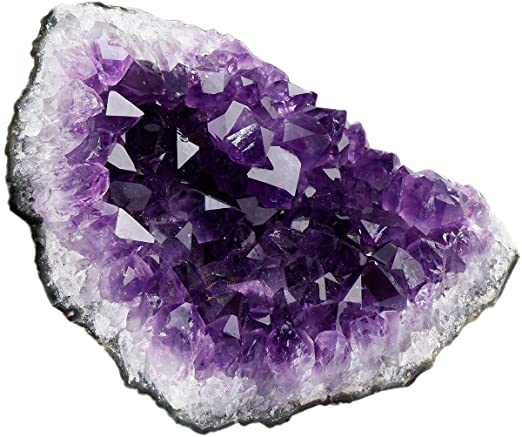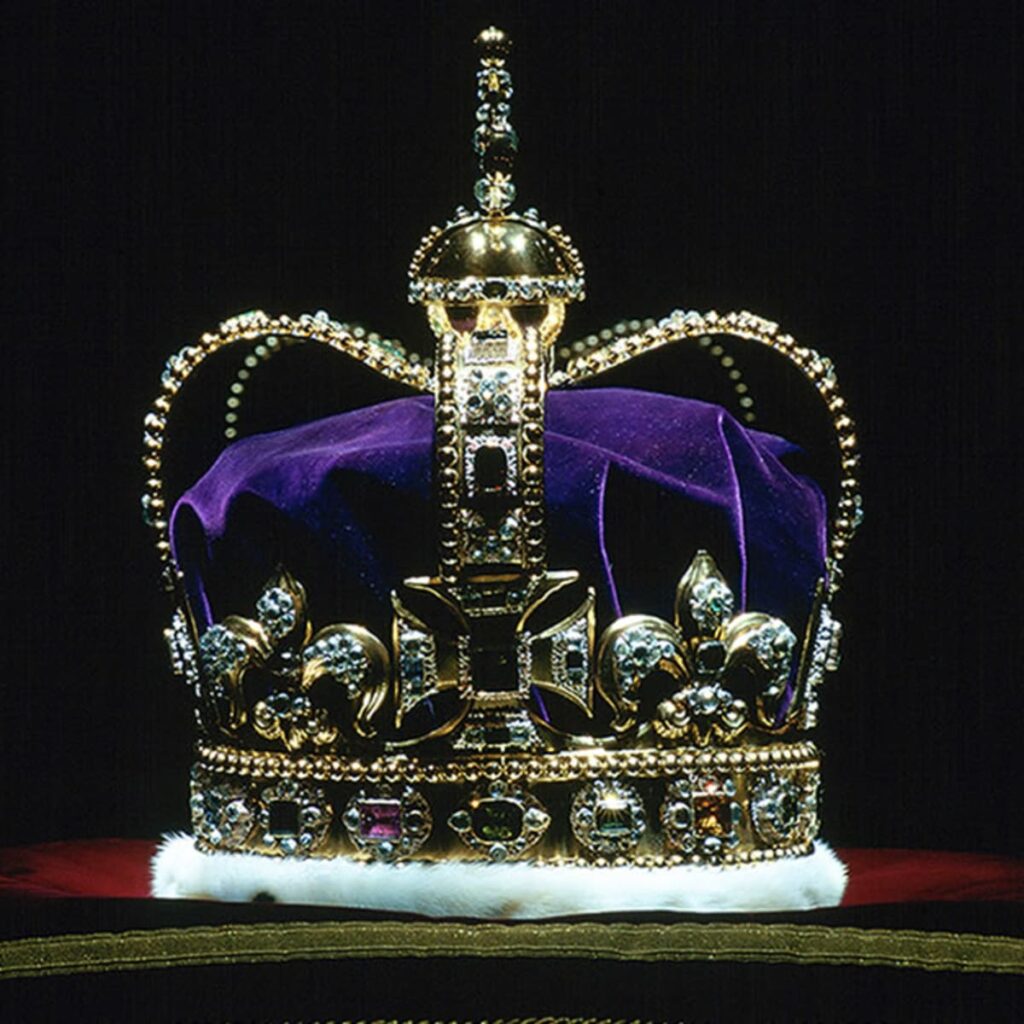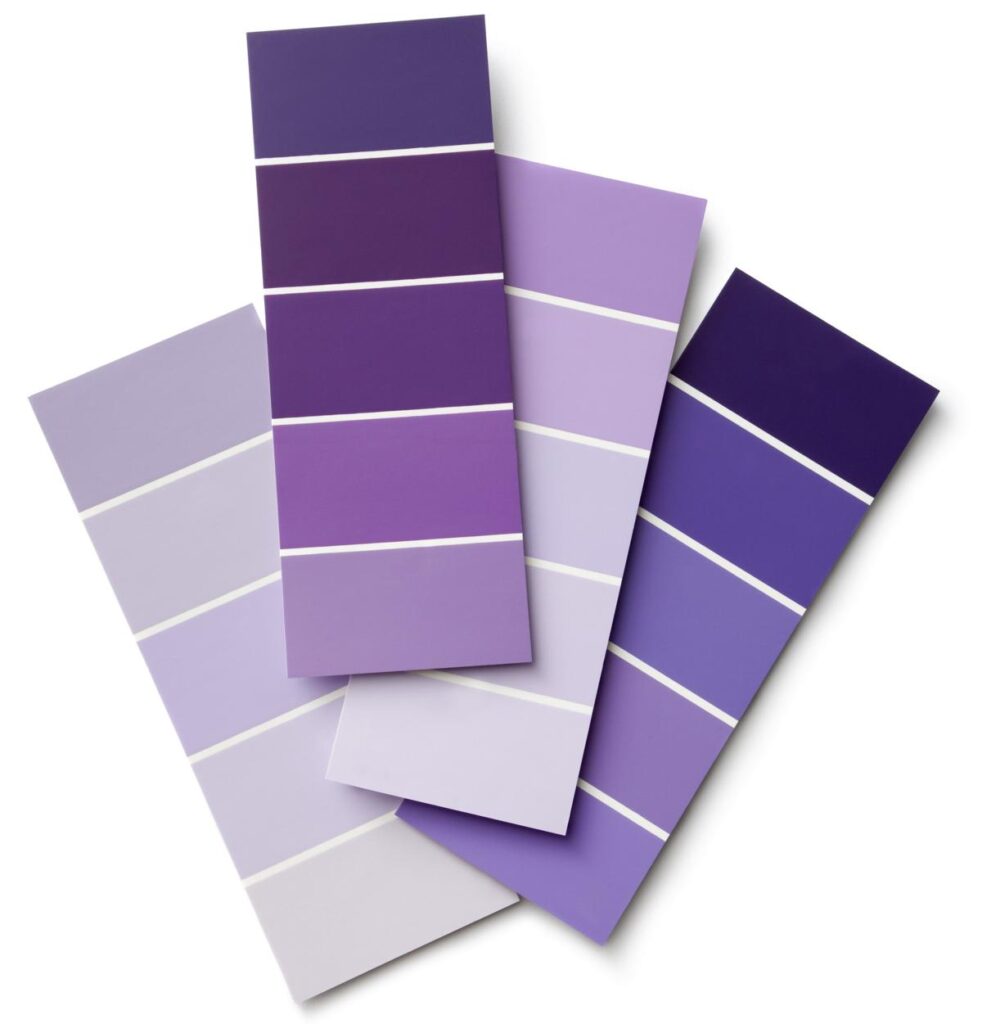Do you want to know the psychology of the colour purple? Read on and we’ll tell you all the details about this colour, its meaning, the emotions associated with it, its symbolism and everything you need to know.
The colour purple is associated with imagination and spirituality. It stimulates the imagination and inspires high ideals. It is an introspective colour, allowing us to get in touch with our deepest thoughts.
The difference between violet and purple is that violet appears in the visible light spectrum, or rainbow, while purple is simply a mixture of red and blue. Violet has the highest vibration in the visible spectrum.
Although violet is not as intense as purple, its essence is similar. In general, the names are interchangeable and the meaning of the colours is similar. Both contain the energy and strength of red with the spirituality and integrity of blue. It is about the union of body and soul, creating a balance between our physical and spiritual energies.
The colour purple or violet helps those seeking meaning in life and spiritual fulfilment: it expands our consciousness, connecting us to a higher awareness. This is why it is associated with the transformation of the soul and why philosophers of the world are often attracted to it.
In the meaning of colours, purple and violet represent the future, imagination and dreams, while spiritually calming the emotions. They inspire and enhance psychic ability and spiritual enlightenment, while, at the same time, keeping us grounded.
Don't miss our ultimate guide on graphic design!
Discover the best online courses, master's degrees, and university programs for a successful career in design with our "Ultimate Guide to Studying Graphic Design: The Best Options for a Successful Career". Shape your future in the creative industry today.View Post Read Later
The colour violet relates to the world of fantasy and the need to escape from the practicalities of life. It is the dreamer who escapes from reality.
From the point of view of purple psychology, violet and purple promote harmony of mind and emotions, contributing to mental balance and stability, peace of mind, a link between the spiritual and physical worlds, between thought and activity. Violet and purple are conducive to the practice of meditation.
The psychology of the colour purple inspires unconditional and selfless love, devoid of ego, encouraging sensitivity and compassion. Violet can be sensitive to all forms of pollution in the world today, whether it be air pollution, noise pollution, visual pollution or pollution in our food chain. This sensitivity makes the violet susceptible to disease and allergies, vulnerable to its everyday environment.
The violet encourages creative activities and seeks inspiration and originality through their creative endeavours. They like to be unique, individual and independent, not just one of the crowd. Artists, musicians, writers, poets and visionaries are inspired by the violet and its magic and mystery.
Purple is the colour of humanitarians, who use their better judgement to do good for others. Combining wisdom and power with sensitivity and humility, purple can accomplish much for the less fortunate.
The colour purple is specifically associated with royalty and nobility, creating an impression of luxury, wealth and extravagance.
Violet has power. It has a richness and a quality that demands respect. Purple is ambitious and self-confident, the leader.
Symbology and psychology of the colour purple or violet

Inspiration: Strong, original ideas are created with violet: use it when looking for inspiration during brainstorming sessions.
Imagination: Purple inspires creativity with the intellect – it is also stimulating for dreamlike activity.
Individuality: Violet is unconventional, individual and original. He hates to copy others and likes to do his own thing.
Spirituality: Purple assists us during prayer and meditation, helping us to get in touch with our deepest subconscious thoughts. Churches often include purple in their stained glass windows.
Purple, the colour of royalty

Purple is the symbol of royalty and wealth. In ancient times, creating dyes to colour fabrics often required great effort and expense, especially for certain colours.
As violet is less common in nature, the resources needed to create a dye of this colour were much harder to come by and much more costly.
In the 15th century, the city of Tyre, located on the coast of ancient Phoenicia, began producing purple dye by crushing the shells of a small sea snail. The resulting colour became known as Tyrian purple and was so well known that it was mentioned in Homer’s Iliad and Virgil’s Aeneid. Alexander the Great and the kings of Egypt also wore clothes coloured with the famous Tyrian purple.
This relationship with royalty was not limited to antiquity. Purple was the colour chosen for Queen Elizabeth II’s coronation tickets in 1953. Purple also represents wisdom and spirituality. Its rare and mysterious nature makes it perhaps seem connected to the unknown, the supernatural and the divine.
Positive features
Purple is cheerful, whimsical and playful. It is associated with escape from reality and magical imagery.
The violet is often a statement of independence, as it is not a basic primary colour, and is often a sign of merging the mundane with the innovative.
Purple is also associated with bravery, and the Purple Heart is awarded to members of the United States armed forces who are wounded in the line of duty. Professional uses of purple convey high courage and lofty goals.
Negative features
As purple lives balanced between red and blue, it can be considered an unstable and non-traditional colour. Notions of royalty and ceremony can be off-putting to more democratic sensibilities, and purple can convey feelings of arrogance and condescension. The colour purple, used professionally, can give the impression of being a little edgy and therefore uncomfortable.
The psychology of the colour purple and spirituality

The chakras are energy centres within the body that help regulate all of its processes. Each chakra governs specific functions and is represented by seven different colours.
Violet: (purple) is the colour of the Crown chakra, also known as Sahasrara. This chakra is located at the top of the head.
The Crown chakra is related to the crown of the head, the nervous system and the brain, and represents pure thought. This chakra connects us with infinite consciousness.
Opening this chakra will help to access deep spiritual understanding. The gemstones that help the Crown chakra are diamond and clear quartz.
Effects associated with the colour purple
The colour purple calms and stimulates our body, putting us in the right place for introspection and focused vision.
It fosters creativity by awakening our senses and promoting the calmness needed for insightful and intuitive observations. Purple creates a harmonious balance of awareness and peace.
The colour purple and personality

Having purple or violet as your favourite colour means that you are sensitive and compassionate, understanding and caring, that you think of others before yourself – you are the person others turn to for help – being needy motivates you but sometimes people take advantage of you.
You are a kind and free spirit. Your feelings run deep and you can be quite sensitive to the hurtful comments of others, though you would never show it.
Being a purple personality, you have a peaceful, quiet quality and a quiet dignity about you.
People are attracted to your charismatic and seductive energy.
You tend to be more introverted than extroverted and may come across as shy, even though you are not.
You are creative and like to be individual in most of your endeavours, including your clothing and home décor – you love the unconventional.
You are idealistic, and often impractical, with a big imagination, dreaming of a future in an ideal fantasy world in which you exclude the ugly side of reality – you tend to look at life through rose-coloured glasses. People who don’t understand you sometimes think you’re eccentric because you spend so much time in your fantasy world.
With your purple personality colour, you inspire others with your creative thinking and your ability to deal positively with adversity.
You are very intuitive and quite psychic, or at least interested in spiritual growth or the occult: you seek spiritual fulfilment. You’re looking for the meaning of life.
As a personality colour, purple, you are a generous person, asking for little in return, except friendship.
You can be reserved, even your closest friends don’t know you well.
If you constantly surround yourself with too much purple, you can become moody. In this case, balance out the purple with a little magenta.
You dislike responsibility and find it hard to cope with real day-to-day problems.
You don’t like to be part of the crowd and want to stand out from it: you like your individuality to be noticed. You don’t like to copy others and you don’t like to be copied.
You are a visionary, with great ambitions, dreams and desires, and a compulsion to help humanity and improve planet Earth. You are often in positions of power because you are visionary, but you delegate to others all the minor details that don’t interest you.
With a purple personality you like to have the best of everything, so you aim high.
Being the free spirit that you are, you love to travel to experience different cultures and meet new people.
You are a good judge of character and summarise others fairly quickly and accurately, though you tend to see the best in everyone.
Time means little to you and you are often late for everything. You trust the flow of the Universe to take care of everything.
You should be careful not to take on too many projects at once, as you can scatter your thinking, leading to stress and confusion.
Meditation is a good activity to help you centre and balance yourself.
Sometimes it can come across as arrogant and conceited if you operate from a negative perspective.
You can be egotistical and self-indulgent, as you don’t like to have others’ beliefs and standards imposed on you.
Shades of purple

- Lavender: Lavender is a light purple colour with a bluish tinge, a light violet colour. It is a colour that is attracted to beautiful things. It has a fragility, sensitivity and vulnerability.
- Lilac: Lilac is a dull pale violet colour with a slightly pinkish tinge. It implies immaturity, superficiality and youthfulness. It is extroverted and enthusiastic, inspiring glamour, romance and vanity.
- Mauve: Mauve lies between lavender and lilac. it helps us to make the best choices and decisions; it is concerned with justice and always does the right thing. On the other hand, it can indicate a degree of vulgarity, the social climber who aspires to higher ideals.
- Amethyst: A mystical colour, amethyst opens intuitive channels. It protects the vulnerable and helps humanitarians. It is the colour of the evolved soul.
- Plum: Plum is a reddish purple. An old-fashioned colour, plum is honourable and linked to family traditions.
- Dark Purple: Dark purple is related to higher spiritual attainments. It is a powerful colour, but can also indicate arrogance and ruthlessness.
As you may have noticed, the psychology of the colour purple is very broad and interesting. if you want to learn more about the psychology of other colours, take a look at our colour psychology section or the psychology of colour in advertising, where we reveal the secrets of the main colours.


